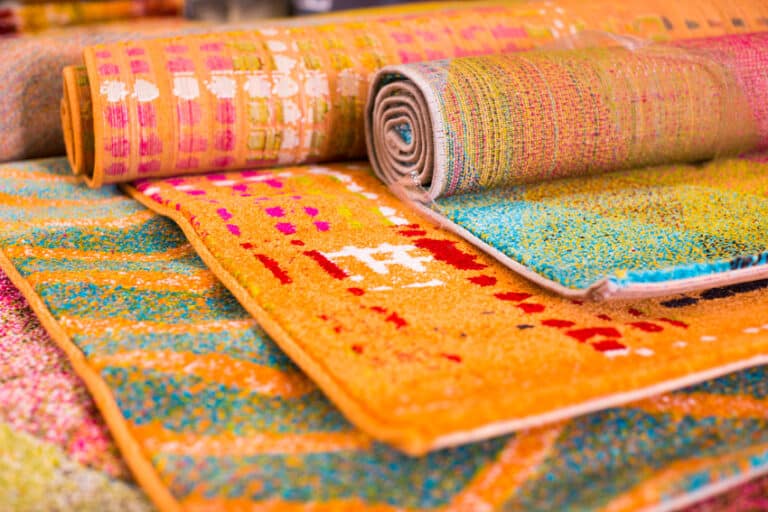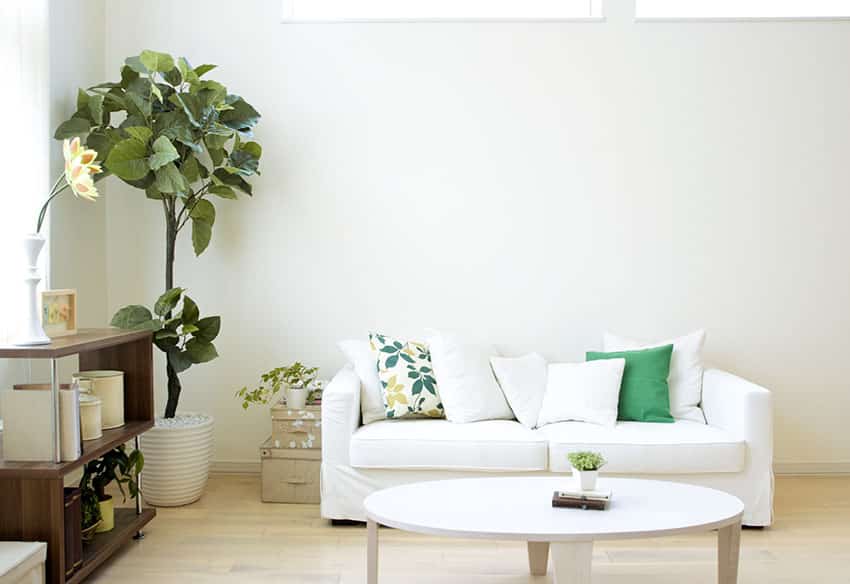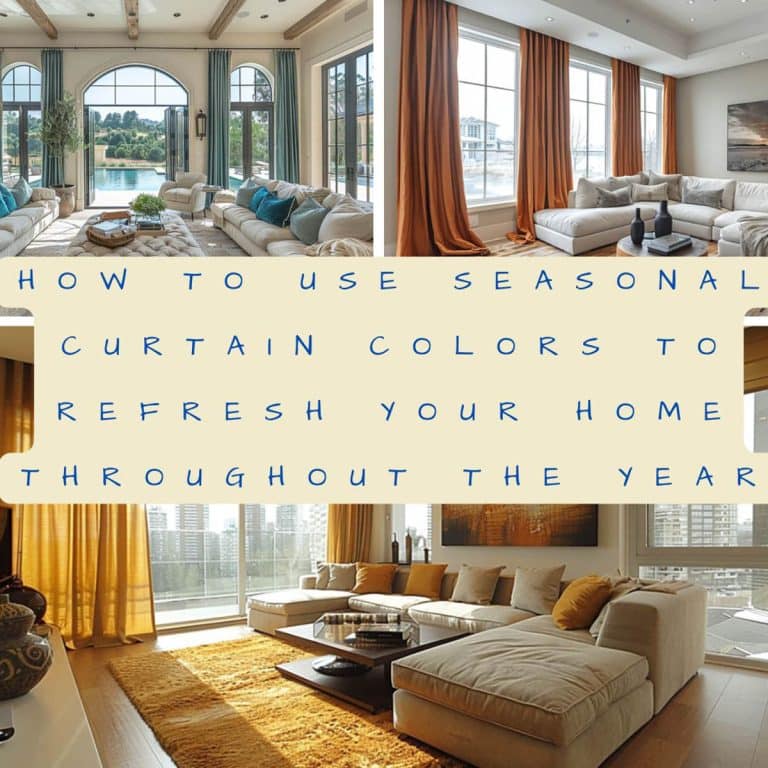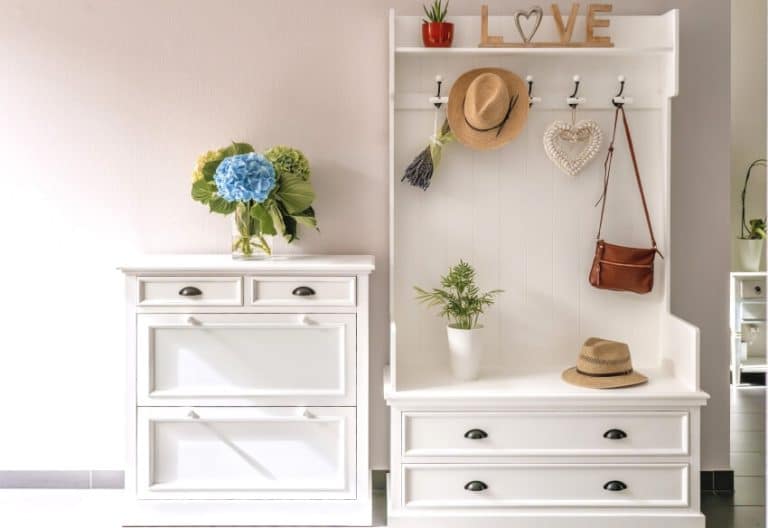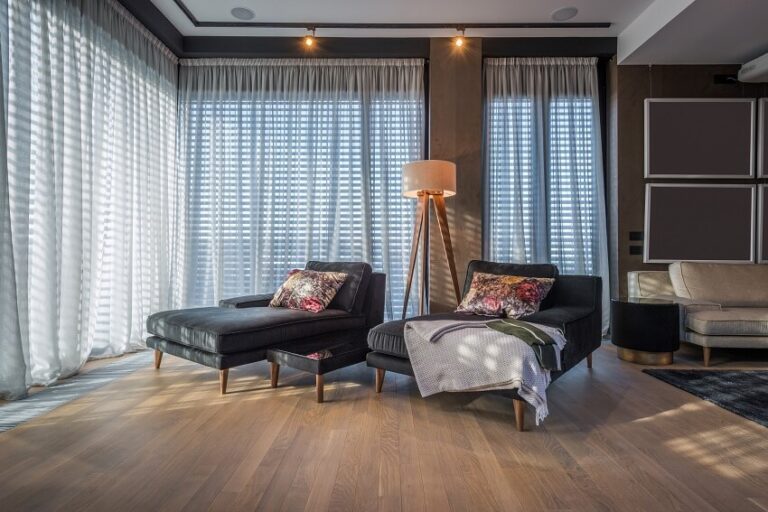33 Types Of Rugs: A Decorator’s Guide to Enhancing Any Space
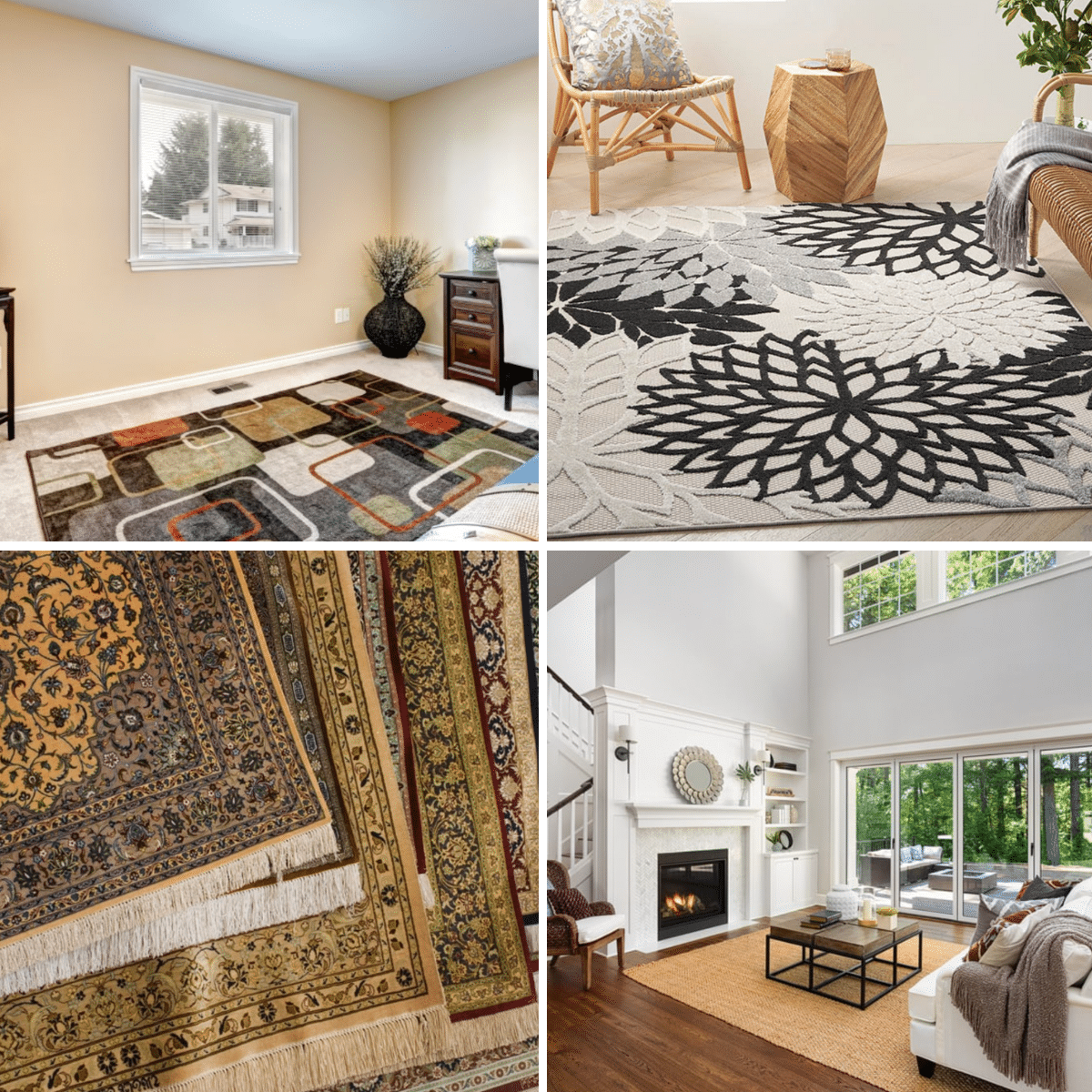
Familiarizing yourself with the different types of rug materials available on the market is essential to designing your home accordingly. There are plenty of things to consider, including the area you’d like to place the rug in, the foot traffic in the said area, and the overall look and feel you’d like to achieve for a particular living space.
Types Of Rugs Materials
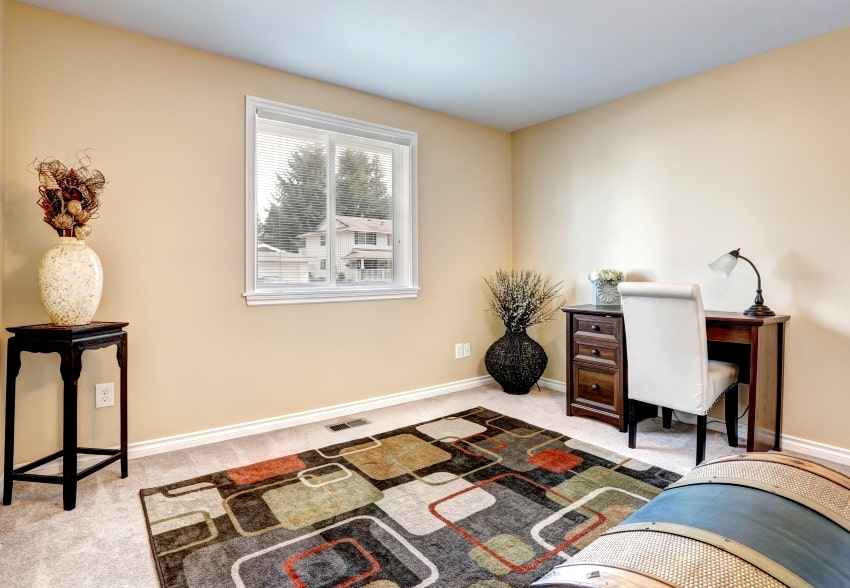
Read on to find out which types of rugs are considered the hottest trends and what you can expect from each of these decorative staples.
Wool Rugs

This type of rug material is particularly prized for its durability and softness. If you’re looking for a rug that provides warmth or insulation and repels water and stains remarkably, then wool is your best choice.
Wool rugs are also excellent for living spaces where you’d like to relax and rest comfortably such as the dining room, living room, and bedroom.
One of the best wool fabrics is the Flokati variant. It is hand-woven using 100% pure wool and has a distinctive fluffy and plush texture. Traditionally, flokati rugs were used as bed covers or blankets. Still, they have become popular as area rugs in modern interior design due to their unique appearance and soft feel.
Area rugs add warmth and beauty and are often a needed accessory to complete a room’s decor. But they must be used strategically to create the biggest impact while supporting safety in the home. – Knack Universal Design, Barbara Krueger and Nika Stewart
Another excellent wool option is the Moroccan rug. Moroccan carpets are traditionally made by the Berber people of North Africa using wool from local sheep. The wool is hand-spun and dyed using natural dyes made from plants, insects, and minerals.

The rugs are then woven using pile and flatweave techniques on a vertical loom. The pile is often left long and shaggy, giving the surface a soft and fluffy texture.
However, a downside to wool rugs is they’re not exactly suitable for areas that are prone to humidity and moisture. Shedding and fading may also become an issue over time.
Wool Rugs Pros and Cons
Pros:
• Wool rugs are durable when properly maintained. It can withstand decades of wear and it’s pretty resilient to crushing or rumpling. Natural wool can bounce back even after you place a heavy object on top.
• They have excellent color retention, so expect that wool floor coverings will sustain their original color over the years.
• It’s easy to clean! Spot removal or stains is uncomplicated if dealt with immediately.
• Wool rugs are environmentally friendly, which means that they can insulate the floor effectively to reduce heat loss and heating costs. In addition, they can also lessen annoying static shocks that are common in cold, dry weather.
• Wool can absorb moisture, which makes it an efficient humidifier and dehumidifier!
• They are flame-resistant. Of course, it could still catch fire, but they are pretty resistant to dropped matches, cigarettes, sparks and other sources of fire.
Cons:
• Wool rugs aren’t really budget friendly. In fact, they cost twice as much as nylon and polyester.
• Just like other materials, wool rugs aren’t oil-resistant. So once you stain it with oil, it’s best to ask for professional help immediately.
• Since wool absorbs moisture, large amounts of liquid water may saturate and waterlog the fibers, which results in mildew. It’s best to avoid placing wool rugs in humid and damp areas.
• Wool rugs are prone to shedding.
• They are insect food, so having a wool carpet in your home means it will attract moths and carpet beetles. To avoid this problem, get your wool rug pre-treated with a mild insecticide called Permethrin. Recent NIH studies have shown it to be safe for people and pets.
Polyester Rugs
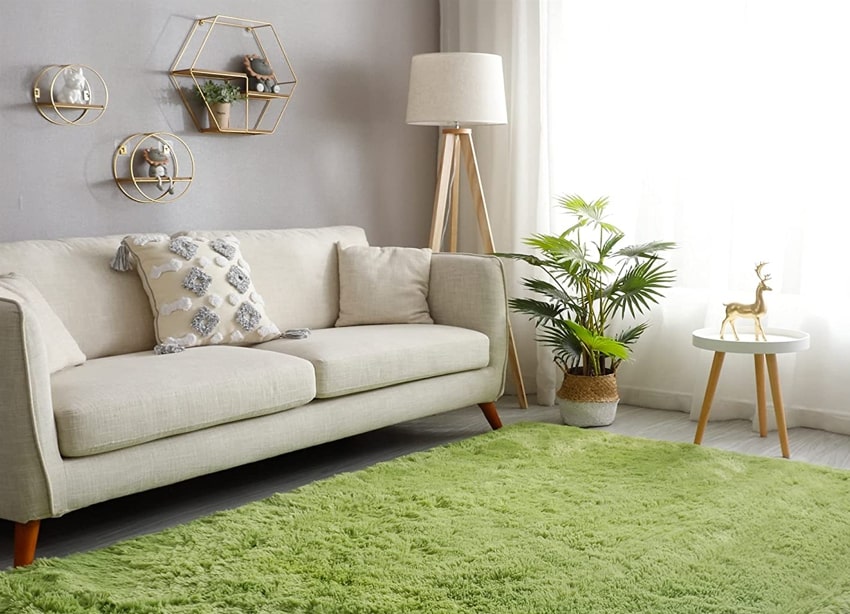
Polyester is another common material that is used for rugs, which are also typically used for other basic necessities such as clothes, linens, cushions, and so on.
Polyester is highly valued for its vibrant colors, design flexibility, and affordability. They can be a great addition for areas such as the bedroom, dining room, living room, and even the basement area.
They’re quite flexible and easy to maintain; in fact, you can use them for either your outdoor or indoor area. Moreover, these materials are usually made of polypropylene and nylon, which are known for their anti-allergy properties.
Still, they’re quite prone to staining so maintenance can be a real issue. They can also generate static electricity so if you’re uncomfortable with mild static electricity shocks, it’s best to avoid this type of material.
Additionally, polyester rugs also tend to unravel easily and get flat over time so they won’t stay as pretty and durable for long.
Tip: Keep these rugs away from heat sources like radiators because they can either scorch or melt when exposed to extreme heat.
Polyester Rugs Pros and Cons
Pros:
• Durable, soft, and budget-friendly! These are some of the advantages of polyester rugs. They have plenty of choices to consider, from polyester rug sizes to color to different designs.
• Polyester make great outdoor rugs! It’s durable enough to stand up to the various weather changes.
• This might sound odd, but some people won’t recommend polyester rugs to fur parents as it attracts fur. However, we strongly recommend it since you know where to find the fur and how to clean it. The only hassle is you might need to vacuum it everyday.
Cons:
• Similar to other types, polyester rugs aren’t stain-resistant. In case you accidentally spilled wine on your polyester fabric, it would be best to ask for professional help.
• Unlike bamboo, polyester rugs generate high levels of static electricity. As a result, you will most likely get a zap after touching a metal.
• A polyester rug will still go flat over time, so it’s not ideal to place a heavy object on top, such as your dining table, sofa, or even bed.
Polypropylene Rug
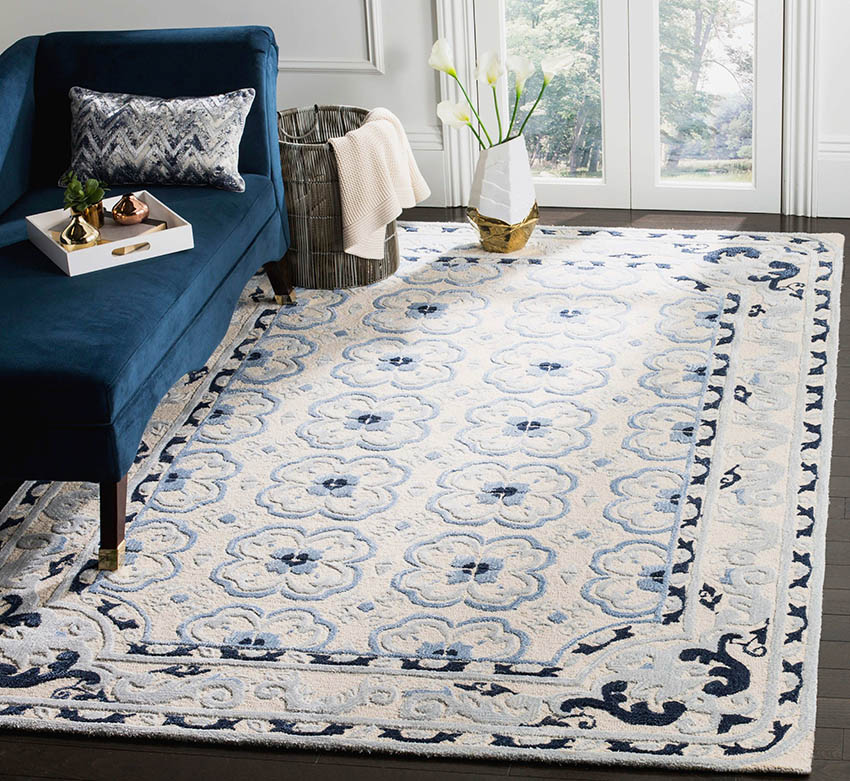
While polypropylene is made of synthetic fibers, it can actually resemble the look and feel of rugs that are made of natural fibers. Polypropylene rugs are also family-friendly, moisture-resistant, easy to clean, and long-lasting.
Moreover, they’re best used for the outdoors, hallways, and other high-traffic areas in the home.
Unfortunately, aesthetic appeal isn’t really something you can bank on when you opt for this type of material compared to other rug alternatives.
Polypropylene Rug Pros and Cons
Pros:
• Polypropylene rugs have a natural look and feel that is very similar to wool.
• They are stain-resistant, which makes them the best choice for people with kids and pets. It requires little maintenance and simple cleaning.
Polypropylene rugs are affordable.
Cons:
• They are less durable than wool, so once the fibers are crushed, it can be hard for your rug’s look to “bounce back.”
• They are not soil-resistant. They can withstand any stain, except for soil since it’s oil-based.
Cotton Rugs
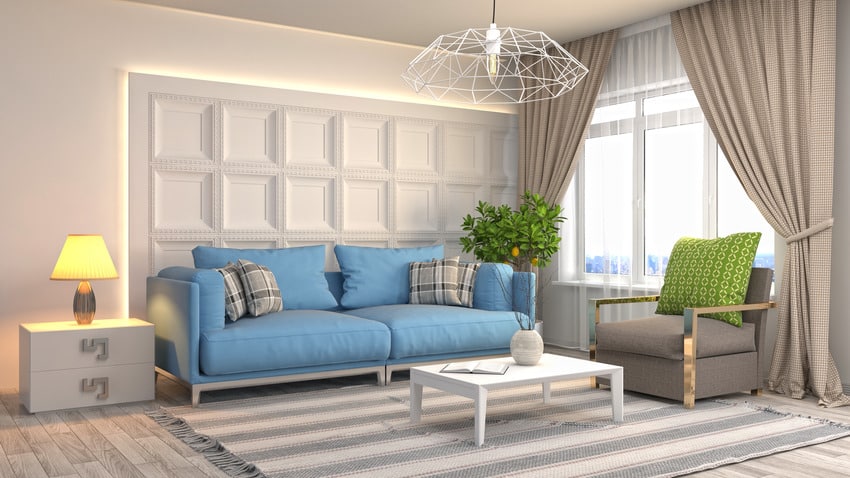
Cotton rugs are another remarkable natural material. They’re soft, comfortable, and are perhaps the most affordable rug material you can get your hands on.
They’re also quite easy to clean and extremely versatile, making them perfect for everyday use in almost any area in the house. It’s also easily the best material to use for flat-weave rugs.
Still, cotton rugs fall short when it comes to durability and tend to have a short lifespan because of this.
Cotton Rugs Pros and Cons
Pros:
• Placing cotton rugs in your home can be a great addition since they are inexpensive. It’s the top choice for people who are on a budget, yet still want their space to look trendy. Most cotton rugs are less than $100, but if you want a quality cotton product, you need to pay a higher price.
• Cotton rugs are washable, which makes them a popular choice for people with kids and pets! Unlike bamboo, they are great for high traffic areas since they can lessen the noise. Throw your cotton rugs in the washing machine at least once a week and they’ll look good as new.
Cons:
• Cotton rugs aren’t stain-resistant. However, since they are washable, they’re still the best option compared to animal skin floor coverings.
• Cotton rugs slide, so it’s best to use a thick carpet pad to avoid any accidents.
• Cotton rugs don’t lie completely flat since they are so lightweight. The solution is to use a heavy-duty pad under your cotton rug.
Silk Rugs
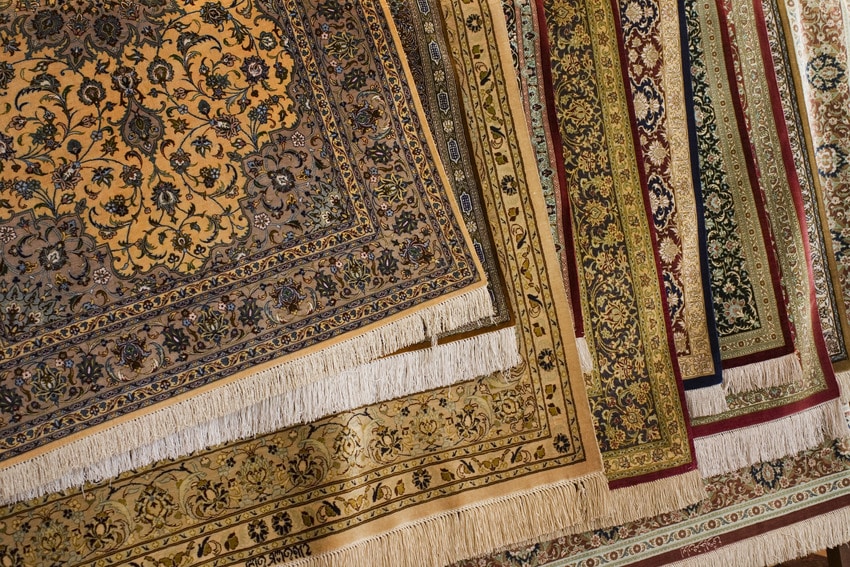
If you want to go for something that’s a bit more on the luxurious side, you might want to consider silk rugs. This material is best known for its fine details, subtle sheen, and incomparable softness.
If you want to indulge yourself and give certain spaces in your home a touch of elegance and coziness, then silk is definitely the material to go for.
Silk rugs are best for low-traffic areas in the home such as bedrooms.
But, take note that silk rugs tend to show marks and footprints if you use them regularly. Because of their delicate materials, professional cleaning is recommended since doing it by yourself can actually be quite challenging.
If you like the beauty of silk rugs, but you’d like something sturdier, you can opt for an Oushak rug. An Oushak rug is a type of decorative floor covering that originated in the town of Oushak in western Turkey.
Oushak styles are known for their distinctive designs, often featuring large, bold patterns and soft, muted colors. They are typically hand-knotted using high-quality wool and silk. Their pile is usually low to medium in height, making them durable and easy to maintain.
Silk Rugs Pros and Cons
Pros:
• Silk rugs can sound intimidating to work with due to their appearance. However, silk is a classic. It creates a lux and sophisticated aesthetic in your space.
• Silk rugs are anti-wrinkle. It’s resistant to crushing and rumpling.
• Silk rugs are durable! The individual fibers of silk are incredibly strong, and when properly woven together, they resist warping. They can be stretched and pulled, and it will still look good as new.
Cons:
• Silk rugs aren’t affordable. We mentioned that it gives off a luxurious and sophisticated look, which means it comes at a price. If you are on a tight budget, we suggest opting for faux silk and silk velvet as alternatives.
• Silk rugs are prone to sun and water damage, so avoid placing them in humid or damp areas, like your bathroom or entryway. It’s also best not to place it in direct sunlight.
Jute Rugs
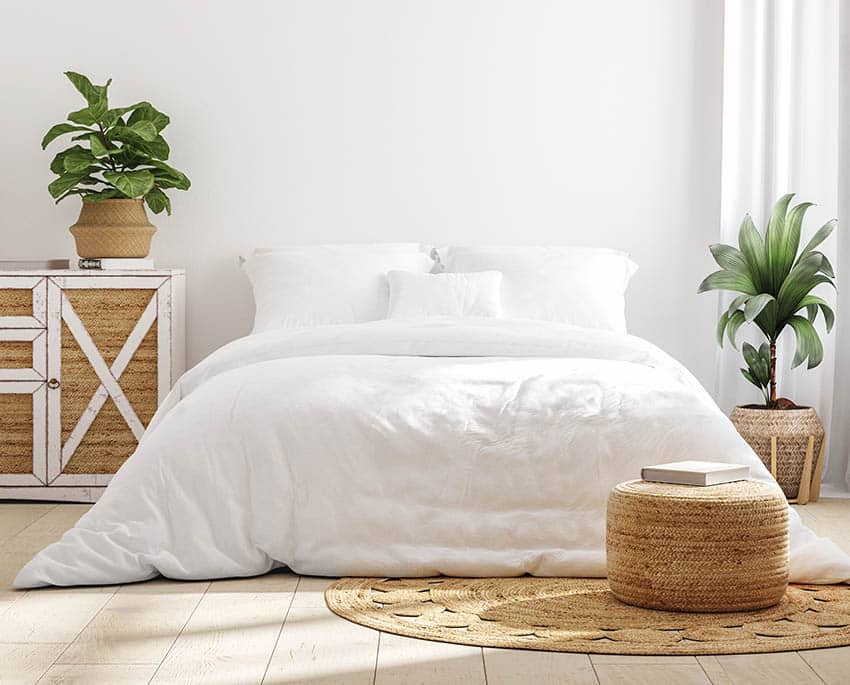
Natural grasses have been making waves lately, and with good reason. For one, they can look amazing especially if they complement the rest of your home décor.
Natural grasses such as jute make for great rugs because they’re neutral, earthy, and versatile. Widely recognized as the design chameleons of the interior designing world, you can easily pair them with any interior theme or color scheme.
If you’re looking for a rug material that’s environmentally friendly and free from any type of chemical processing whatsoever, then jute is definitely for you.
They’re especially excellent to incorporate into the areas of your home that get a lot of natural light, such as the living room and kitchen. They can also hold up well against wear and tear.
Nonetheless, these carpets also have their downsides. First, they are actually quite hard to clean. Careful and thorough cleaning is required for this type. Avoid scrubbing them since it can break the materials easily.
Some of the jute varieties also tend to be rough or coarse, essentially defeating the purpose of adding a rug indoors unless you intend to use it simply as a decorative piece from the get-go.
Jute Rugs Pros and Cons
Pros:
• Durable, soft, and made of natural materials. They are thicker compared to bamboo, which makes them ideal for your living room, bedroom, or kid’s room.
• Jute is pet-friendly!
• They are easy to clean and require little maintenance.
• Similar to bamboo, jute comes in a wide array of sizes and colors. Some jute rugs have simple patterns, too!
Cons:
• Since jute is made of natural fiber, it is quite absorbent, so it’s not ideal as a welcome mat or bathroom rug.
• While jute is durable, it tends to become moldy or mildewed, so avoid placing them in humid or damp areas of your home.
Bamboo Rugs
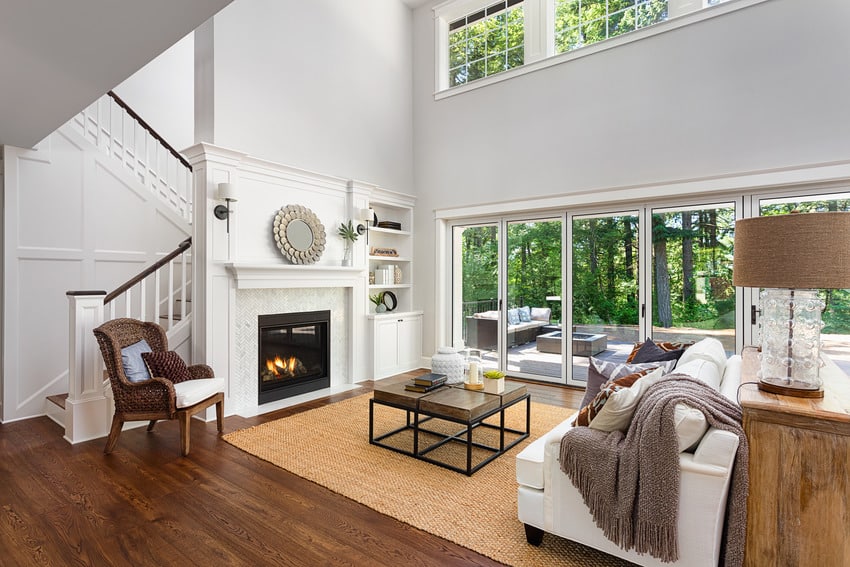
Bamboo rugs, as the name suggests, are made of bamboo silk fibers which are one of the hottest interior trends lately. They’re quite soft and visually pleasing, as well as renewable and eco-friendly.
In fact, there are also bamboo silk variations that can possibly rival the softness of real silk.
A major downside to bamboo, however, is they can be quite delicate and are not, in any way, moisture-resistant. Even something as basic as a water spill could completely alter their look, leaving a permanent stain on them.
This can also affect their durability. Moreover, their delicate nature may require professional cleaning and maintenance.
Bamboo Rugs Pros and Cons
Pros:
• There are many advantages to using bamboo rugs in your home, such as their fire resistance. Bamboo is known to be fire retardant due to its natural structure and oils. Of course, it still could catch fire, but it will take a long time to spread.
• Bamboo is insect-resistant since it contains an antimicrobial agent that gives bamboo a natural resistance to pests and fungi.
• Bamboo is allergen-resistant because of its smooth and easy-to-clean surfaces.
• They are naturally anti-static, so they don’t conduct electron charges.
• You can use bamboo floor coverings in any area of your home, like your living room or kitchen. They also look good as entrance mats.
• They have a wide array of sizes, colors, and patterns! Plus, they can be stained or painted to fit your home’s style.
Cons:
• Since they are made of bamboo, they can be louder than other materials. Our advice is to avoid using it in high traffic areas.
• They will bleach in direct sunlight, so never place them in direct sunlight.
Faux Hide Rugs
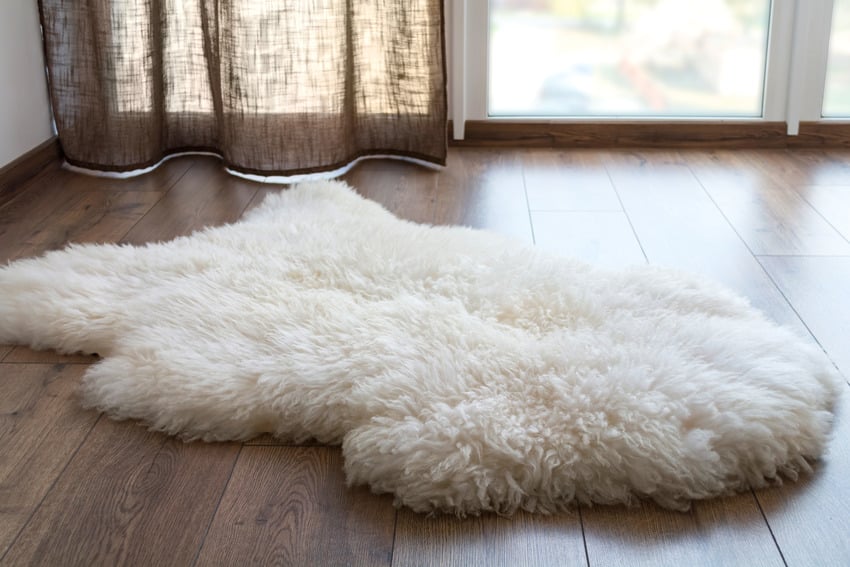
If you’re into the luxurious look and feel of animal skin but are still concerned for the welfare of animals, then faux hide rugs may be your best bet.
This material mimics the texture and appearance of real animal skin. It has a soft and suede-like texture and is very comfortable to use. They’re loosely regarded as faux fur.
Faux fur rugs are typically made of synthetic fibers designed to imitate the look and feel of real animal fur. These fibers can include polyester, acrylic, and modacrylic, which are woven or knitted together to create a plush, fluffy texture that resembles fur. Some faux fur products may also have a latex or cotton backing to help them stay in place on the floor.
However, take note that faux hide rugs aren’t nearly as thick or comfortable as authentic hide. The materials of the former are typically thinner and are more prone to shedding. Moreover, they aren’t capable of withstanding wear and tear at all. There are also instances wherein the material can unravel or fray a little at the sides.
Faux Hide Rugs Pros and Cons
Pros:
• Faux hide creates a lux and elegant feeling in a space, which makes them another popular choice, especially for people who aren’t fans of genuine animal hide.
Cons:
• The disadvantage of using faux hide is that they shed easily, especially when new. Plus, they aren’t easy or simple to clean.
Animal Skin Rugs
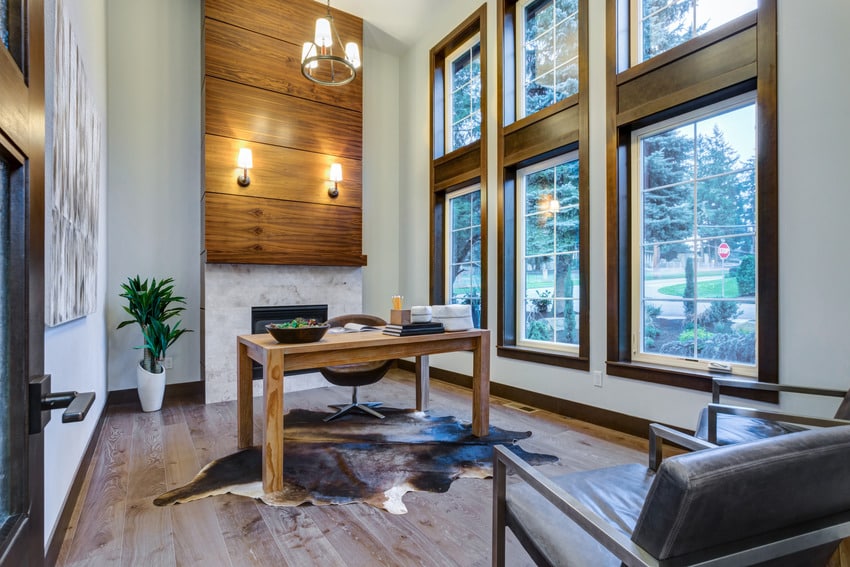
If you want to create an exotic yet elegant ambiance, you should seriously consider getting animal hide or animal skin rugs for your living space. These types are becoming more popular because of their natural look and feel.
Essentially, they come in a diverse range of majestic patterns that can only be produced by the exhilarating beauty of nature. They’re also hypoallergenic and very easy to clean and maintain.
One prized example of this type of rug is sheepskin. A sheepskin rug is made from the skin and wool of a sheep. The skin is typically tanned to preserve and remove excess fat or tissue, and the wool is left intact to create a soft and cozy texture.
Additionally, they’re excellent for dens, offices, bedrooms, and other areas in the home that rarely get a lot of foot traffic.
Still, a major disadvantage of animal skin is they’re essentially made of leather, meaning they can get damaged easily when exposed to extreme humidity or moisture.
They can also be quite expensive, so if you want to purchase floor coverings on a budget, it’s best to consider other alternatives.
Animal Skin Rugs Pros and Cons
• Pros – Animal skin rugs, such as cowhide, are more durable compared to synthetic materials because they are one solid piece.
• Animal skin is more stain-resistant compared to other materials, like cotton or faux hide.
• Cons – One of the disadvantages of using animal skin is the steps you need to take to protect and care for it. Animal skin rugs are sensitive to chemicals or bleach which can easily damage the material.
• You cannot use animal skin carpeting in spaces, like the bathroom or kitchen wherein it will be drenched with water.
Synthetic Vs. Natural Rug Materials
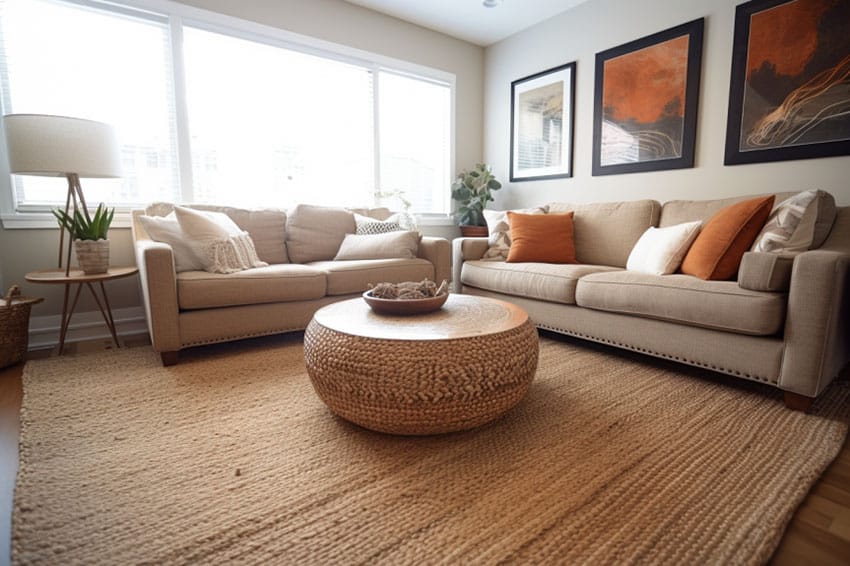
Where you want to place the rugs in your home, what kind of aesthetic you want to achieve, and how you will maintain them all play a part in deciding a material.
Natural Rug Materials
Natural rug materials are usually made of jute, hemp, sisal, seagrass, coir, cotton, or even wool. They’re ethically sourced mostly, are biodegradable, and have unique qualities such as being hypoallergenic, fire retardant, and anti-microbial.
Most of these rugs also come with green certifications. A few of the most important green certifications are Greenguard, Greenguard Gold, Global Organic Textile Standard (GOTS), and Global Organic Latex Standard (GOLS).
Advantages of Natural Rug Materials
Natural rug materials provide a more luxurious, traditional appearance that will complement any interior design. Natural fibers are often softer and stronger than synthetic ones as well.
Natural materials are wonderful for warmer regions because they will help keep your floor cooler and may also be more breathable.
For busy households with kids or pets, natural materials like wool or sisal are a good choice since they have stain resistant qualities and fade less over time.
Last but not least, eco-friendly natural carpeting materials help give any space a touch of organic charm and peace of mind that you are stepping on a healthier material.
Synthetic Rugs
As the name implies, synthetic rugs are made of materials that aren’t naturally procured. They are essentially made of a wide variety of materials, such as nylon, polyester, and polypropylene.
Most of these rugs are professionally produced and treated, meaning they are normally cheap, but that doesn’t necessarily guarantee good quality. Because of the latest advancements in technology, most synthetic materials can even imitate the texture and appearance of natural fiber rugs.
Advantages of Synthetic Rug Materials
Compared to natural materials, synthetic rug materials have several benefits, including being more affordable, simpler to maintain, and more resistant to fading or wear and tear.
Moreover, synthetic materials frequently weigh less than natural materials, which might make them simpler to install and carry.
You can pick a synthetic rug that matches your style because they are available in a variety of hues and patterns.
Synthetic carpets are ideal for busy families with kids or pets because of their durability in the face of spills and fading over time.
Types Of Weaves
The thing is, not all rugs are created equal. Basically, there’s a wide array of materials readily available to make them.
You’d need to consider what fits you best according to these factors: style, functionality, budget, and personal preference. And under the various styles available, there are also several types of rug weaves to consider.
Flatweave Rugs
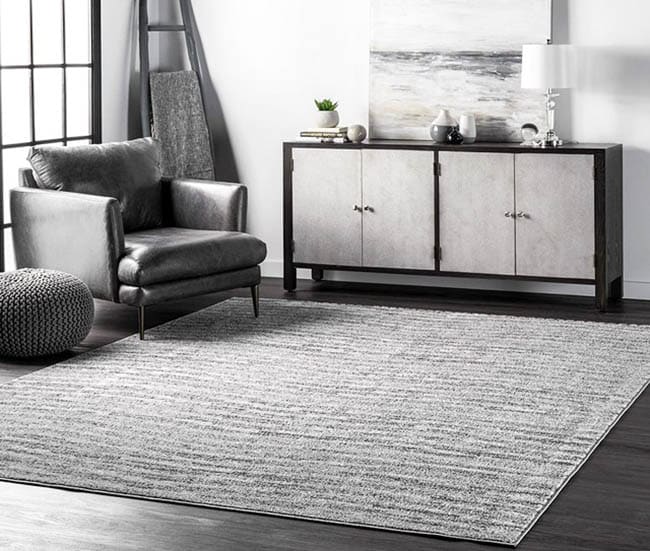
Flatweave rugs, like the name suggests, are flat. They don’t have the typical “pile” made of extra pieces of yarn on its backing.
Flatweave rugs are known for their durability. They are also easy to clean as they don’t need any special handling.
Moreover, they hold up very well to foot traffic, which means that they can be pretty long-lasting too. Synthetic flatweaves, in particular, are resistant to outside elements which make them suitable for outdoor use as well.
They can come in a wide variety of designs, including handmade ones such as the Kilims, which are known for their tribal designs and are perfect for adding a touch of culture to any space.
Braided Rugs
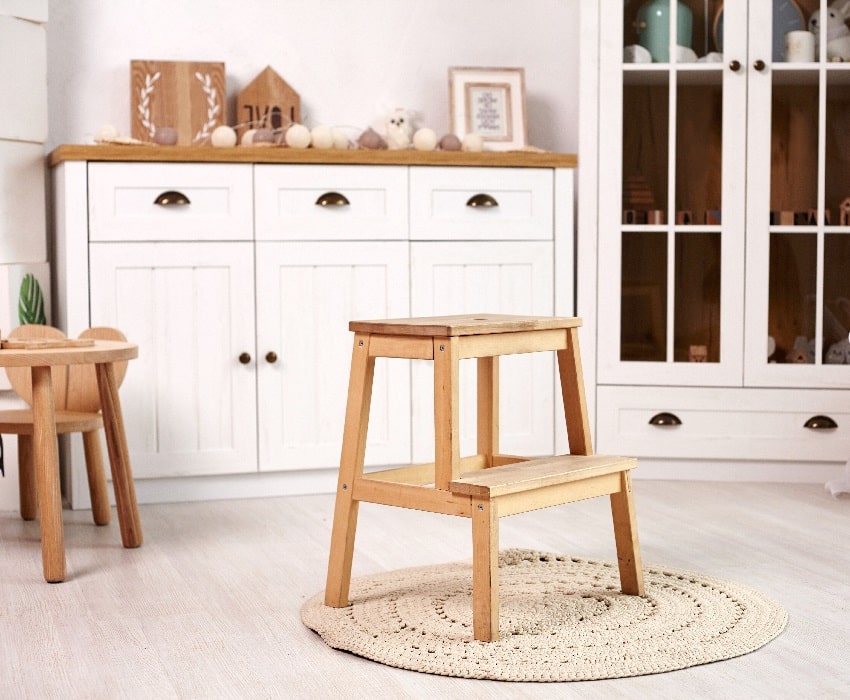
Braided rugs, on the other hand, have been around since the colonial period and are quite common in the U.S. They are easily recognizable because of their oval shape and rustic, country-style look.
They are a perfect addition to any bohemian-style interior. Braided rugs are usually made of materials that are braided into one long strand and then wound into a spiral pattern until the desired shape is accomplished.
Styles Of Rugs
The style of rug you choose can impact the look and feel of a room and influence its overall design theme. Depending on your choice it can range from calming and soothing to vibrant and energetic.
Animal Print
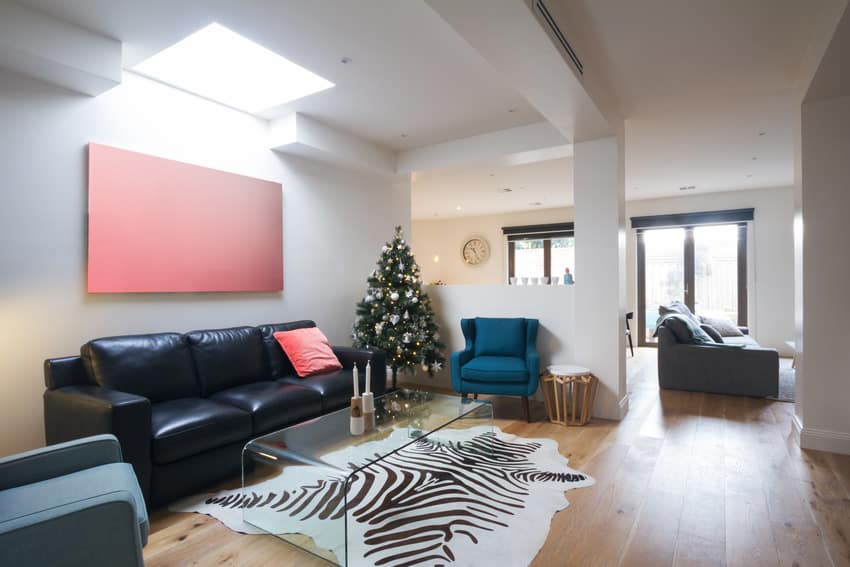
The most common animal print patterns for rugs are leopard, tiger, and cow prints. They have a natural look that can appear sophisticated when paired with the right interior and decorative pieces.
Border
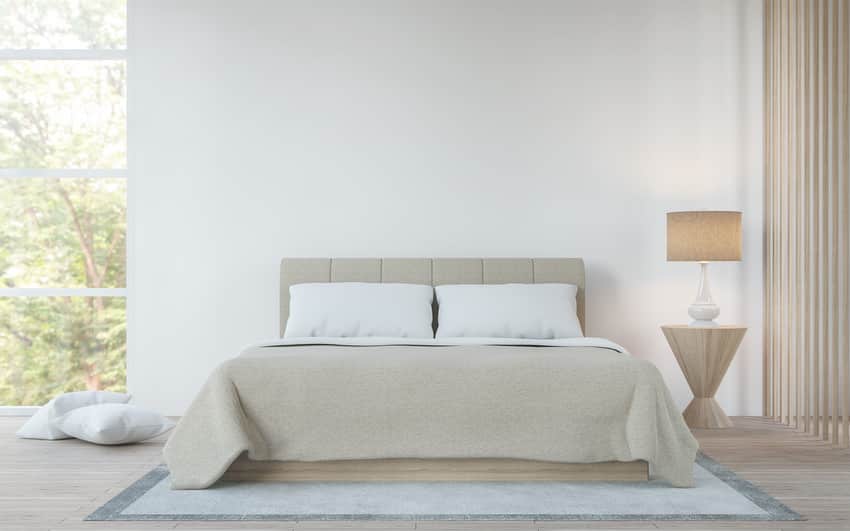
This is an unusual but surprisingly versatile rug design. As the name implies, border rugs have straight and stately borders near the outlines.
Using these rugs as centerpieces for the living and dining room is recommended.
Chevron Pattern
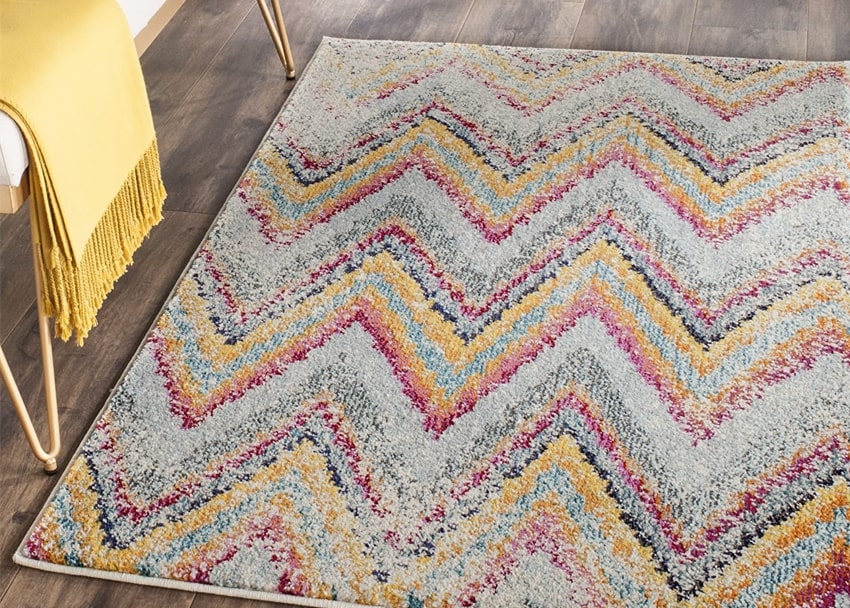
If you’re looking for something that breaks away from the monotonous design of plain colored rugs, a chevron rug may be a creative and whimsical option. Despite its rather flamboyant look, it still surprisingly fits well with a wide variety of interior design styles and themes.
Chevron rugs are best known for their zigzag or V-shaped patterns. If you’re into stripes but would like to add a little bit more personality to the design, then a chevron-styled rug is perfect for you.
Coastal
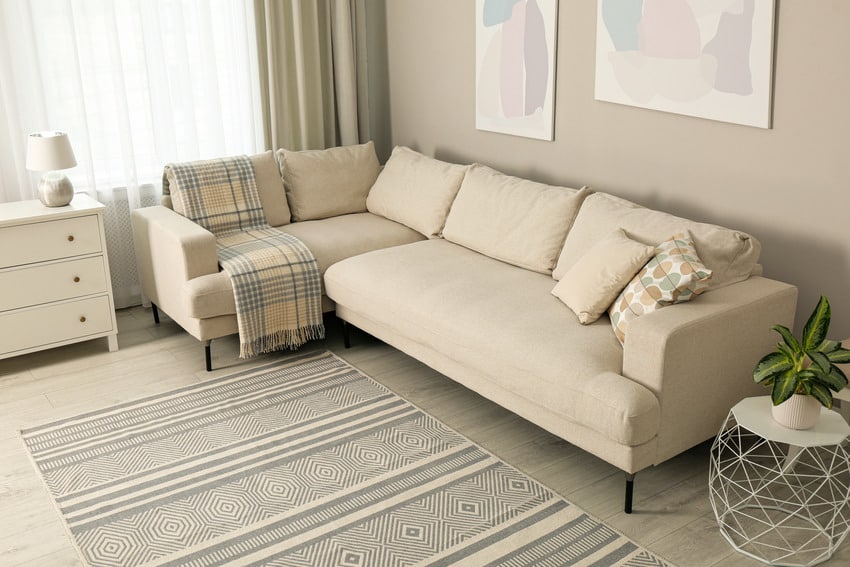
Coastal rugs are typically made of natural grasses such as seagrass, sisal, and jute. They’re usually woven, sustainably harvested, and feel soft underfoot. Most of them are slightly coarsely textured too.
Distressed
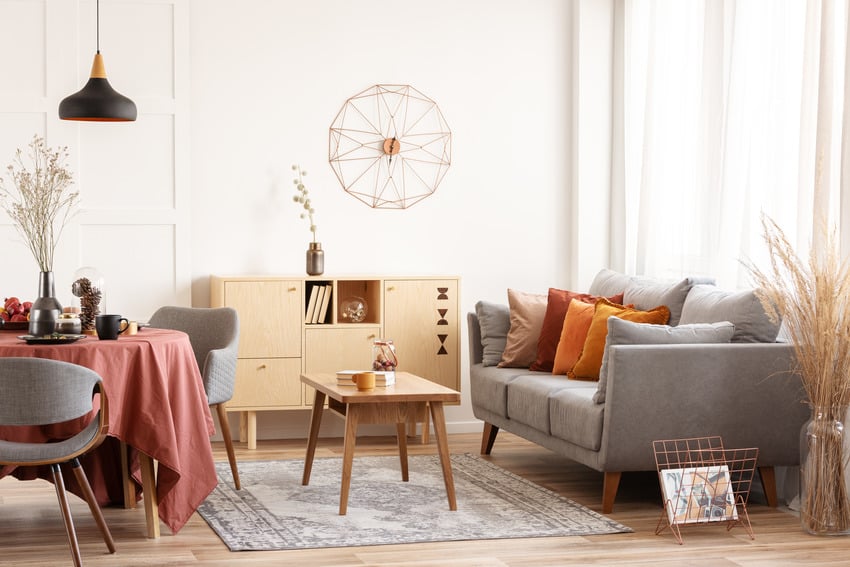
These rugs particularly have an aged and worn-out finish, one of the hottest trends that most people seem to love these days.
This look is achieved by chemically treating the rug fibers, on top of being soaked and then shaved.
Dyed Rugs
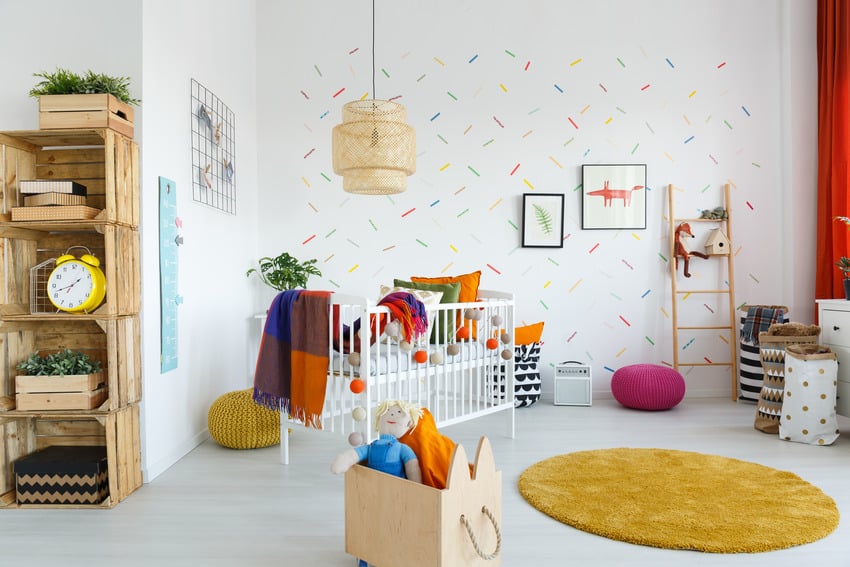
Interestingly, dyed rugs can be any type of rug that has been dipped in a vat of dye to achieve any desired color.
If you particularly like doing projects yourself, a dyed rug may just be the fix you need to bring out your fun and creative side.
Floral Pattern
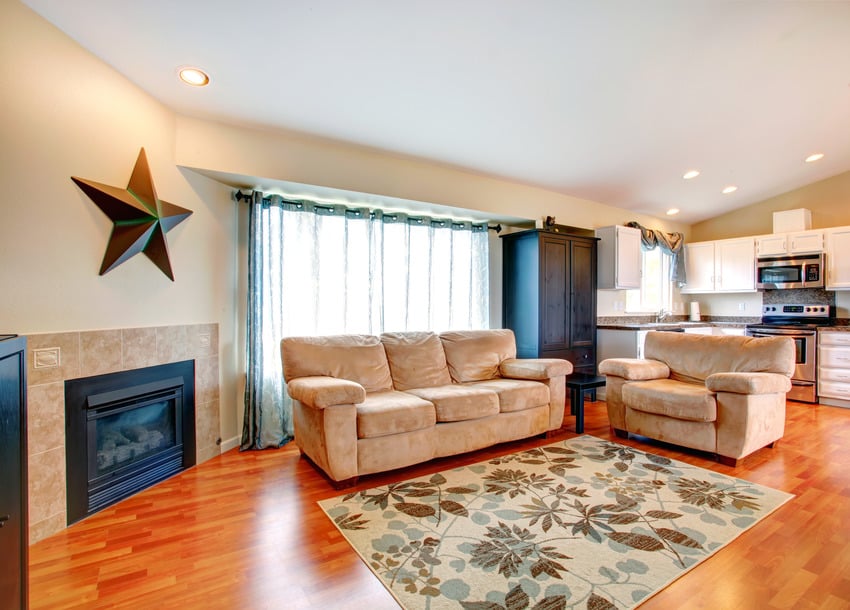
These rugs typically have patterns of flowers on the surface, with a broad selection of designs and colors available to choose from to mix and match with any room interior.
High-Low Rugs
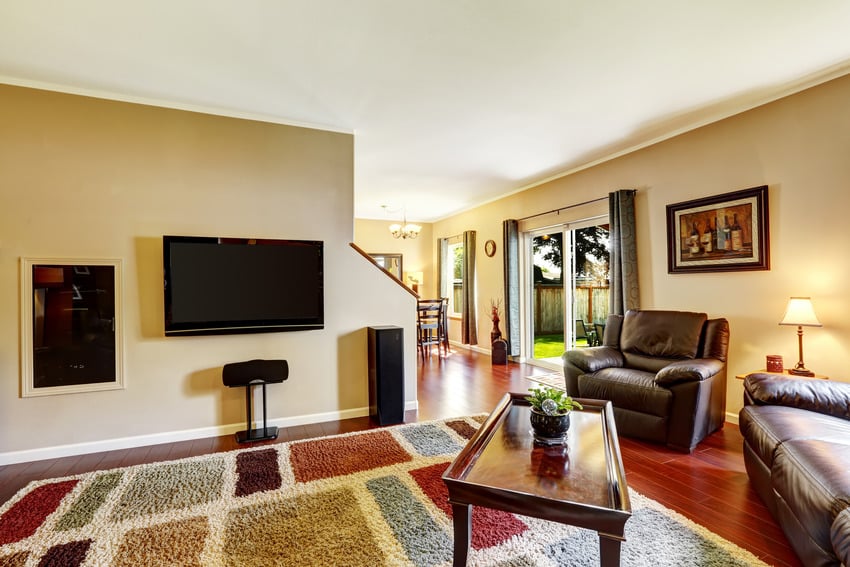
These are rugs that come in varying textures, hence the name high-low. This means that some areas of the rug are high while some are low, creating a unique and rather sophisticated effect.
Ikat
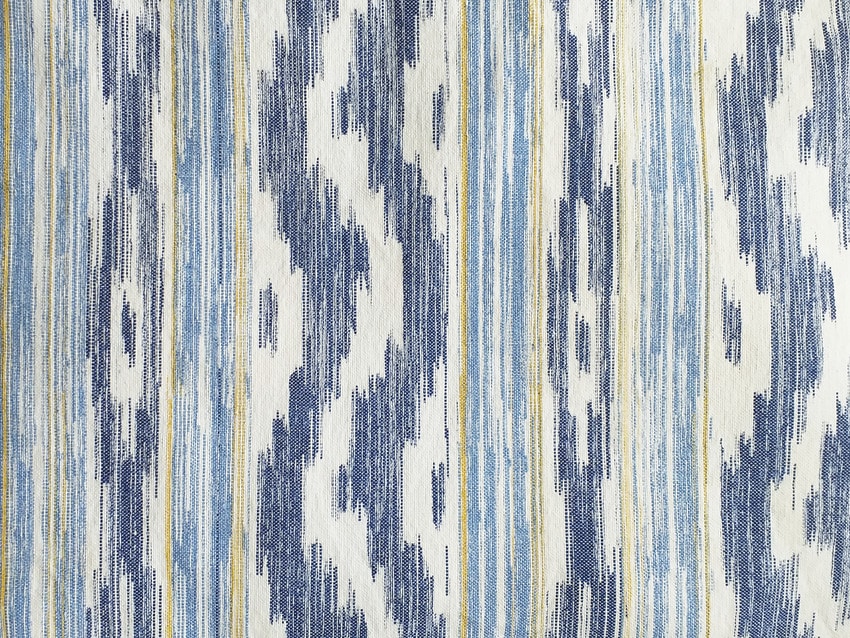
An Ikat rug is a decorative rug that had its threads dyed before being woven together, resulting in a careful and elaborate pattern design depending on the level of binding.
These threads are usually bound together in a pattern.
This makes the threads covered by the binding resistant to the dye, which forms the patterns.
Medallion

A medallion-styled rug is usually centered on a single symmetrical centerpiece. The designs can have varying shapes and styles, but the most common patterns are stars, quatrefoils, circulars, and octagons.
Modern Geometric
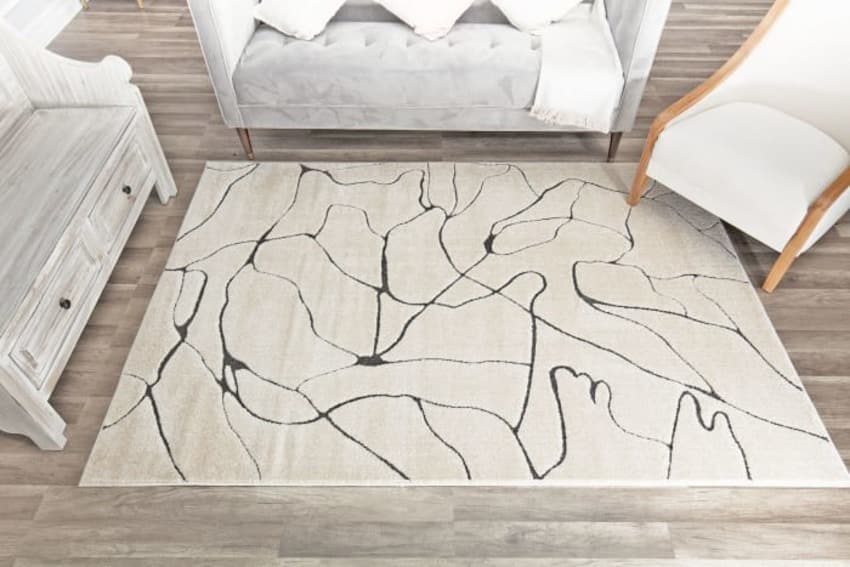
If you want to make a statement piece of design with your rug, then a geometric rug is a perfect choice. This type of rug best complements elements such as brass, luxurious leather, and jewel tones.
Geometric rugs can definitely make a room stand out regardless of the occasion.
Novelty
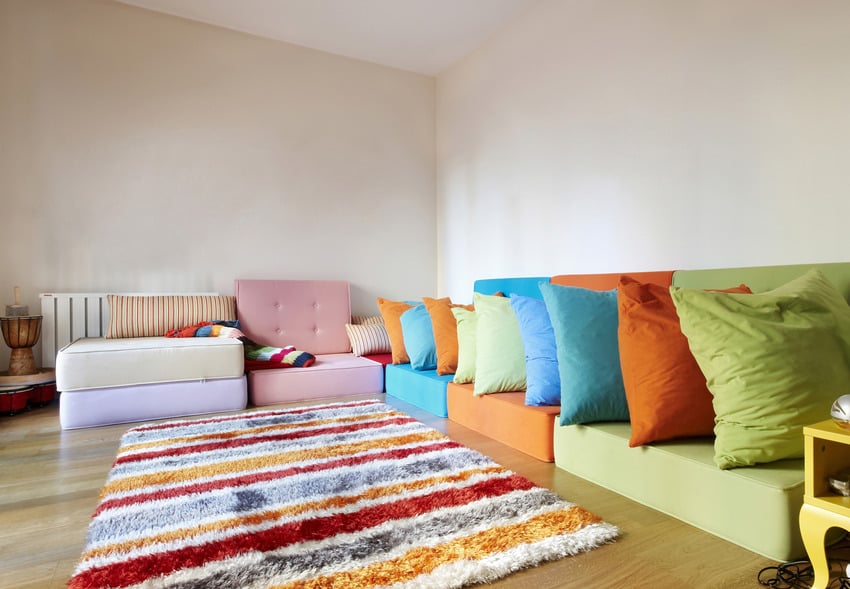
Novelty rugs are usually handmade, custom-made, commissioned, or made-to-order rugs. If you want to bring out and leave a trace of your personality in your home interior, then consider investing in novelty rugs.
Oriental
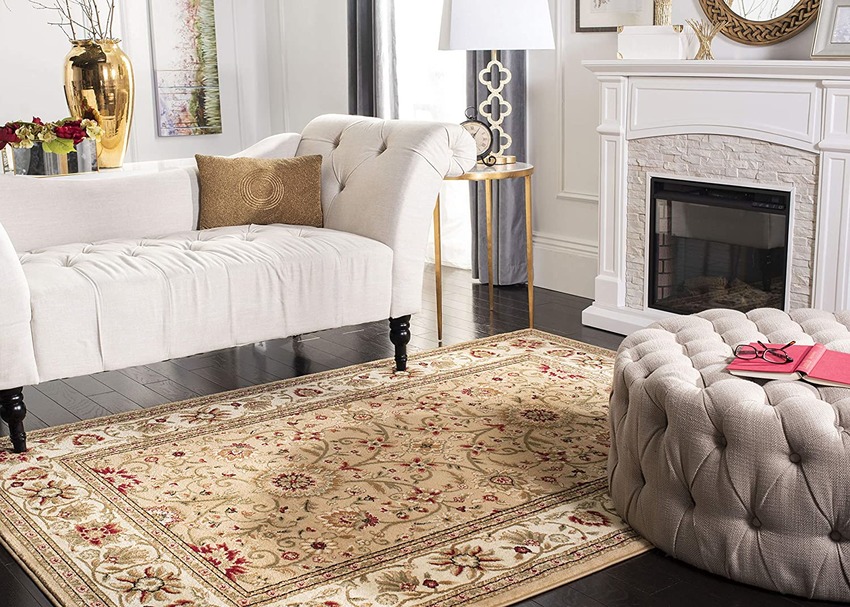
Normally, a rug is considered oriental if it satisfies the requirements for hand-knotted rugs. These rugs, particularly the handmade ones, are known for their vibrant colors, luxurious fabrics, and interweaving, intricate patterns, evoking rich character and culture.
Countries like Russia, Pakistan, Turkey, China, India, Nepal, and Tibet are the world’s most prolific oriental rug exporters.
Persian
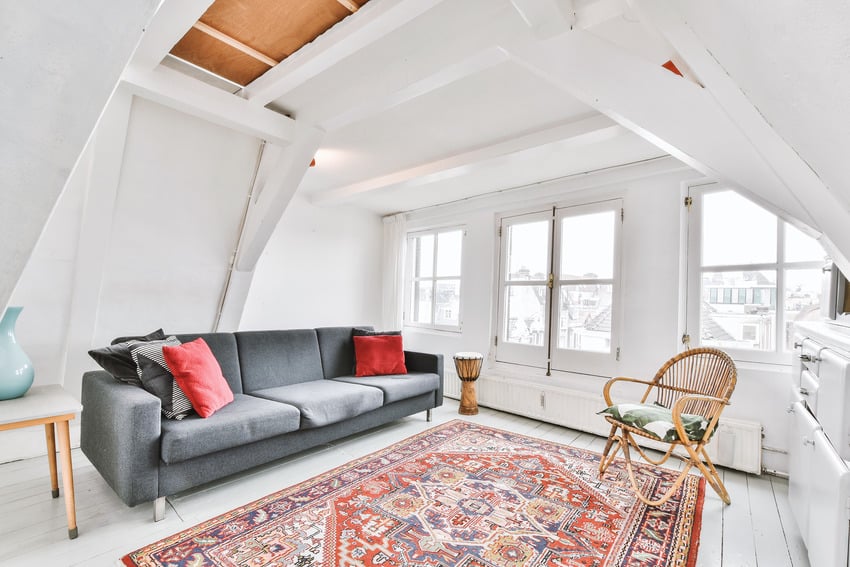
Persian rugs are famous for their intricate designs and rich, vibrant colors. They’re usually made of luxurious materials such as silk, natural wool, and other prime-grade synthetic materials.
Due to their complex nature, they require painstaking craftsmanship, which is probably one of the main reasons why they are very expensive. Persian rugs are also highly regarded for their durability and quality.
Plaid
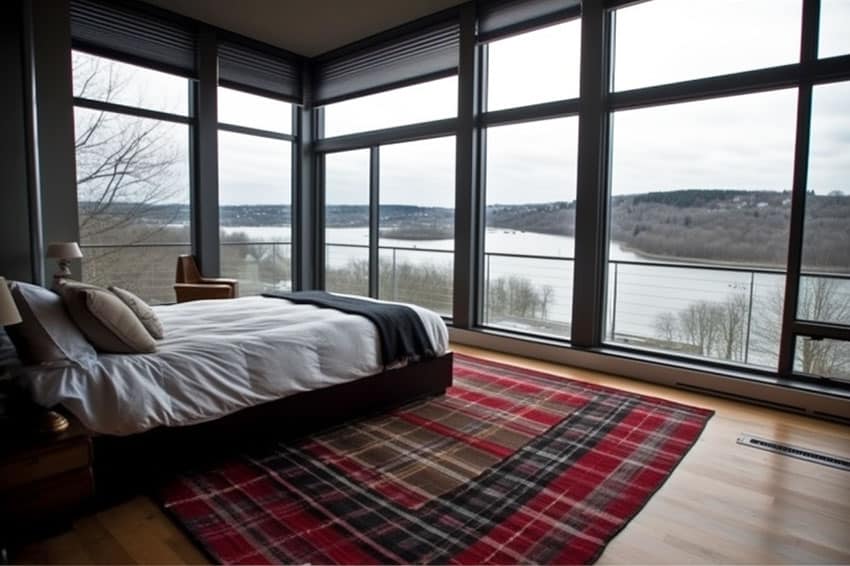
These are rugs known for their crisscrossed patterns that come in varying styles and colors, usually in a combination of two to three colors.
Rustic

Rustic rugs normally take inspiration from nature for their designs, such as stone, leaves, wood, and a few other organic elements.
They tend to create a relaxing and inviting effect when incorporated into one’s home interior.
Shag
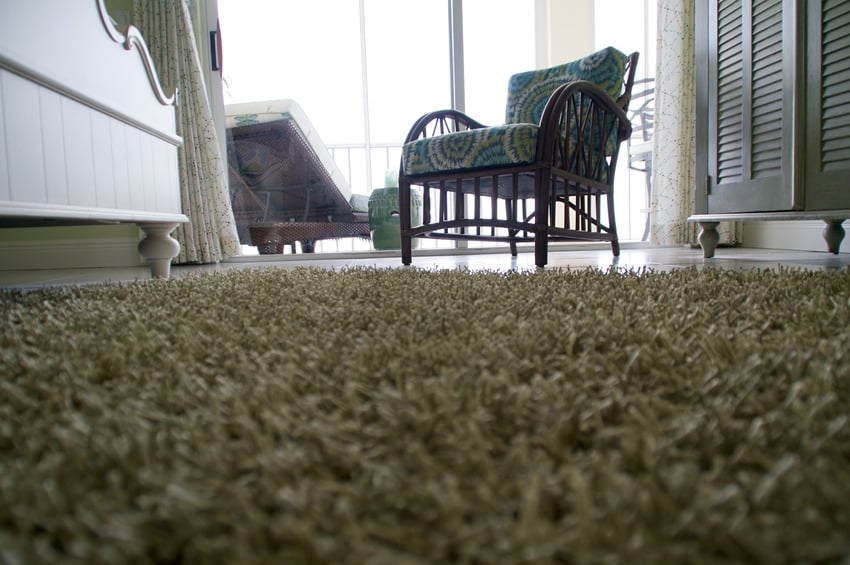
Shag rugs, in particular, are perfect for hardwood floors because they can be quite soft and silky, creating a contrasting effect.
They’re perfect for when you want to walk around the house barefoot since they’re extremely comfortable to the touch. Moreover, they can be excellent insulators as well.
Solid Rugs
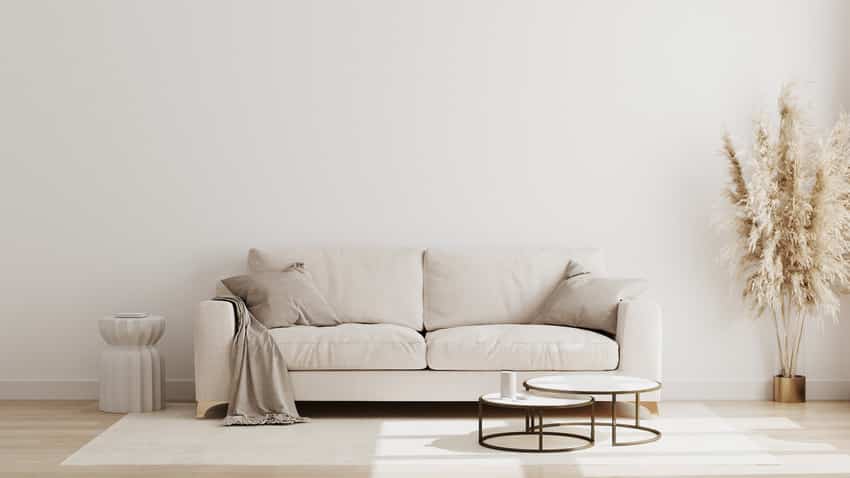
These are rugs that come in plain, solid colors without any additional designs or patterns on the surface. Basically, they’re a perfect choice if you want to achieve a minimalist or a monochromatic look for your living space.
Southwestern
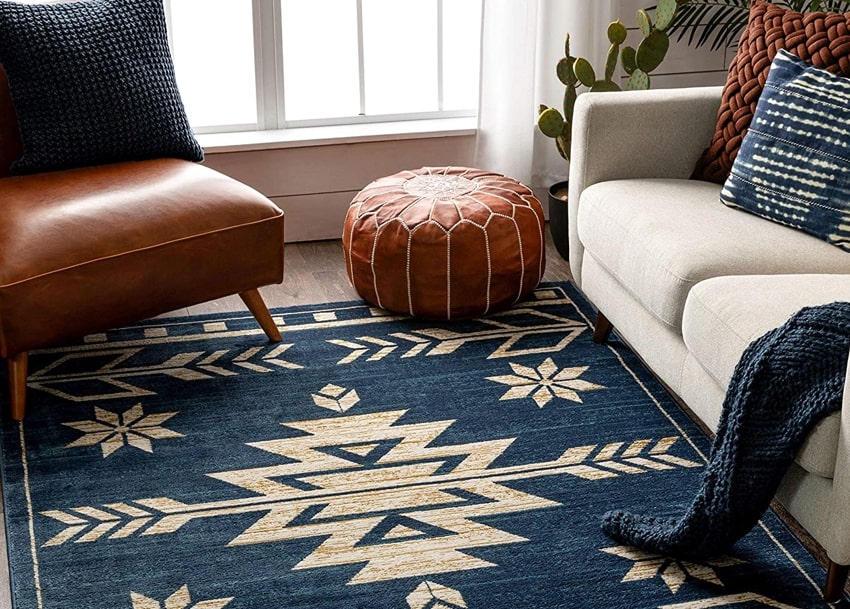
Often characterized by earth colors mixed with vibrant ones, handcrafted objects, and rocky textures, these rugs have a certain masculine appeal to them.
The resourcefulness and originality of the Aztec people, Navajo people, and other Native American tribes essentially inspires southwestern rugs.
Striped
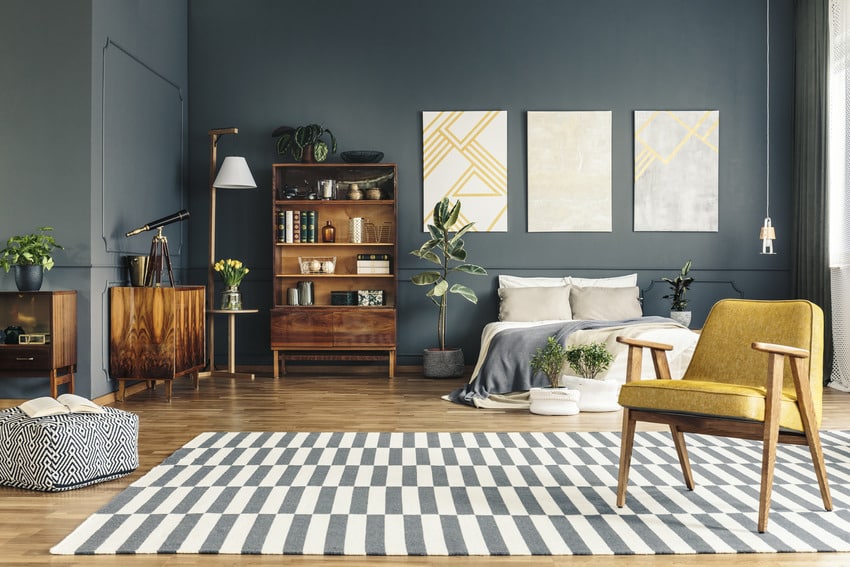
These are common types of rugs that come in striped patterns in a combination of two or more colors.
How to Choose a Rug
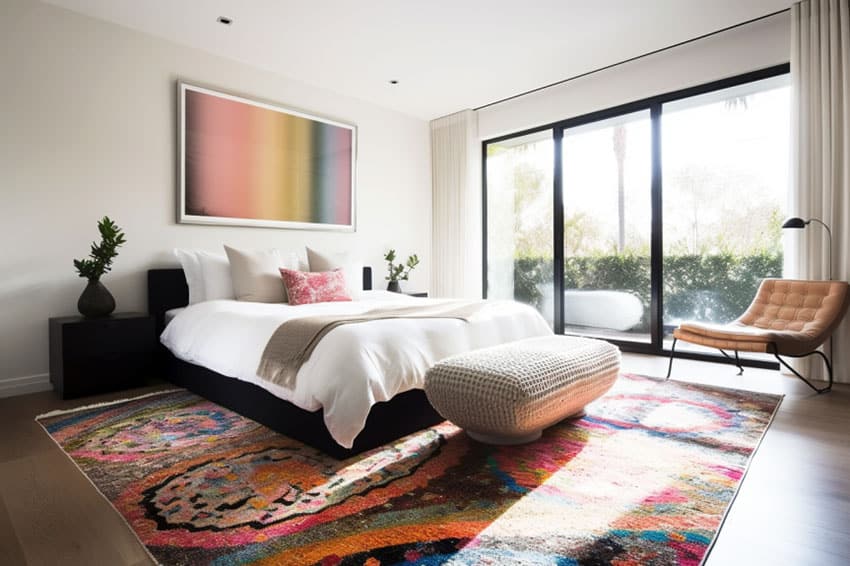
Follow these tips to find the best rug for your home.
#1 Measure Your Space. Before you go shopping, measure the space where you want to place the rug. Is it in your living room? Do you need a runner in your kitchen? A welcome mat? Or a soft fabric in your bedroom? We suggest using a painter’s tape and include the furniture on top to get the best fit.
#2 Choose the Right Style. Of course, you need to pick a rug that blends with your home’s interior and color palette. Jute is perfect for casual spaces, while geometric patterns go well in a modern space. Pinterest can help you source and create interesting picture boards for your space.
#3 Consider the Material. This is the most important since it will help you save money. If you have pets or kids, it’s best to buy cotton or wool since both are durable and easy to clean. If you are placing rugs in your kitchen, make sure they are stain-resistant, especially to oil.
#4 Think of Foot Traffic. Some rugs aren’t made for areas with high traffic since they can easily wear. Low-pile rugs, like flat weaves, are ideal for high-traffic areas of your home. Meanwhile, high-pile options, like shag and open weaves, go well in your home office.
#5 Consider Colors and Patterns. Similar to choosing the rug’s style, the color and pattern should blend with the color of the flooring and furniture.
#6 Invest in a Rug Pad. We mentioned that cotton carpets slide, so it’s best to place a rug pad underneath. These pads are a savior since they prevent accidents and protect the rug’s fibers.
Easy To Clean Rugs
Nylon rugs are hands down the easiest to clean. This is perhaps due to the synthetic nature of their fibers.
They’re also extremely durable and they can withstand a lot of abrasions. Overall, they are pretty great at retaining their appearance despite getting washed, sponged, scrubbed, and even steam-cleaned.
General Rug Care
To get the most out of your rug, you need to treat it with care. Rug care differs in the type you have, but these general tips will help you maintain and extend its life.
Vacuum Regularly – Vacuuming it everyday helps reduce dirt, dust, fur, and even soil. Avoid using powerful vacuums. Instead, go for a flat head vacuum cleaner. Clean your rugs professionally every year or, if you can, every six months.
Clean Spills and Spots Immediately – We don’t know how often we have mentioned this, but once it is stained, clean it immediately or ask for professional help.
Leaving your rug with stains will make it difficult to remove and can be permanent. Use a mild detergent and lukewarm water to clean spills. In the case of bamboo and silk rugs, seek professional cleaners.
Do Not Place Rugs Under Direct Sunlight – Sunlight can fade your rug’s color and pattern. You might not notice it, but fading will happen slowly over time, and you will only realize that it looks bleached due to sunlight when it’s too late. Avoid placing your rug under direct sunlight.
Furniture Marking – We are aware that furniture can leave marks on the carpet. To remove furniture dents, use an ice cube and let it melt. Dry and avoid placing furniture on top.
For more related content about the various types of rugs, check out our guide on how to pick rug sizes.

